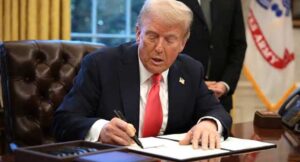The Kangra District Private Hospital Doctors Association has urged the Himachal Pradesh government to immediately release pending payments under the Ayushman Bharat and HIMCARE schemes. At a meeting in Kangra, the association strongly criticised the government for delaying payments to private hospitals for over 15 months, calling it an illegal withholding of funds.
The association refuted allegations of inflated billing, stating that despite repeated government claims, no evidence had been provided. “If fraud was suspected, why was the HIMCARE scheme continued until August 31, 2024? Why wasn’t it discontinued in 2023?” they questioned, asserting that denying hospitals their rightful dues on this pretext was unacceptable.
Private hospitals struggling to survive
Speaking to reporters, Dr Naresh Vermani, association president, highlighted that small and medium-sized hospitals were on the brink of collapse. Many have been forced to take loans to pay salaries and meet other financial obligations due to blocked payments. “If the Chief Minister fails to fulfill his promise of clearing all dues by March 31, 2025, we will take legal action to recover our payments with interest,” Dr Vermani warned.
“Small and medium-sized hospitals are on the brink of collapse. Many have been forced to take loans to pay salaries and meet other financial obligations due to blocked payments. If Chief Minister fails to fulfil his promise of clearing all dues by March 31, 2025, we will take legal action to recover our payments with interest. Besides, CM’s statements tarnish the reputation of private hospitals, disregarding their crucial role in healthcare delivery, especially in Himachal.” – Dr Naresh Vermani, president, Kangra District Private Hospital Doctors Association.
Objectionable remarks against private hospitals
The association also condemned Chief Minister Sukhvinder Singh’s recent remarks, which they claimed unfairly accused private healthcare providers of corruption and profit-driven practices. “His statements tarnish the reputation of private hospitals, disregarding their crucial role in healthcare delivery, especially in Himachal where public hospitals and medical colleges have largely become referral centers,” Dr Vermani said.
The association pointed out that private hospitals have been handling emergencies and providing essential medical services in the absence of adequate government healthcare infrastructure.
‘Private hospitals’ role during Covid-19 ignored’
The association reminded the government of the private healthcare sector’s vital contribution during the Covid-19 pandemic, when private hospitals risked everything to ensure uninterrupted medical services. “For a leader of his stature, such remarks are uncalled for,” they said, urging the government to recognise the indispensable role of private hospitals in Himachal Pradesh.
The association reiterated its demand for immediate clearance of pending dues and called on the Chief Minister to retract his remarks and engage constructively with private healthcare providers. The Tribune









